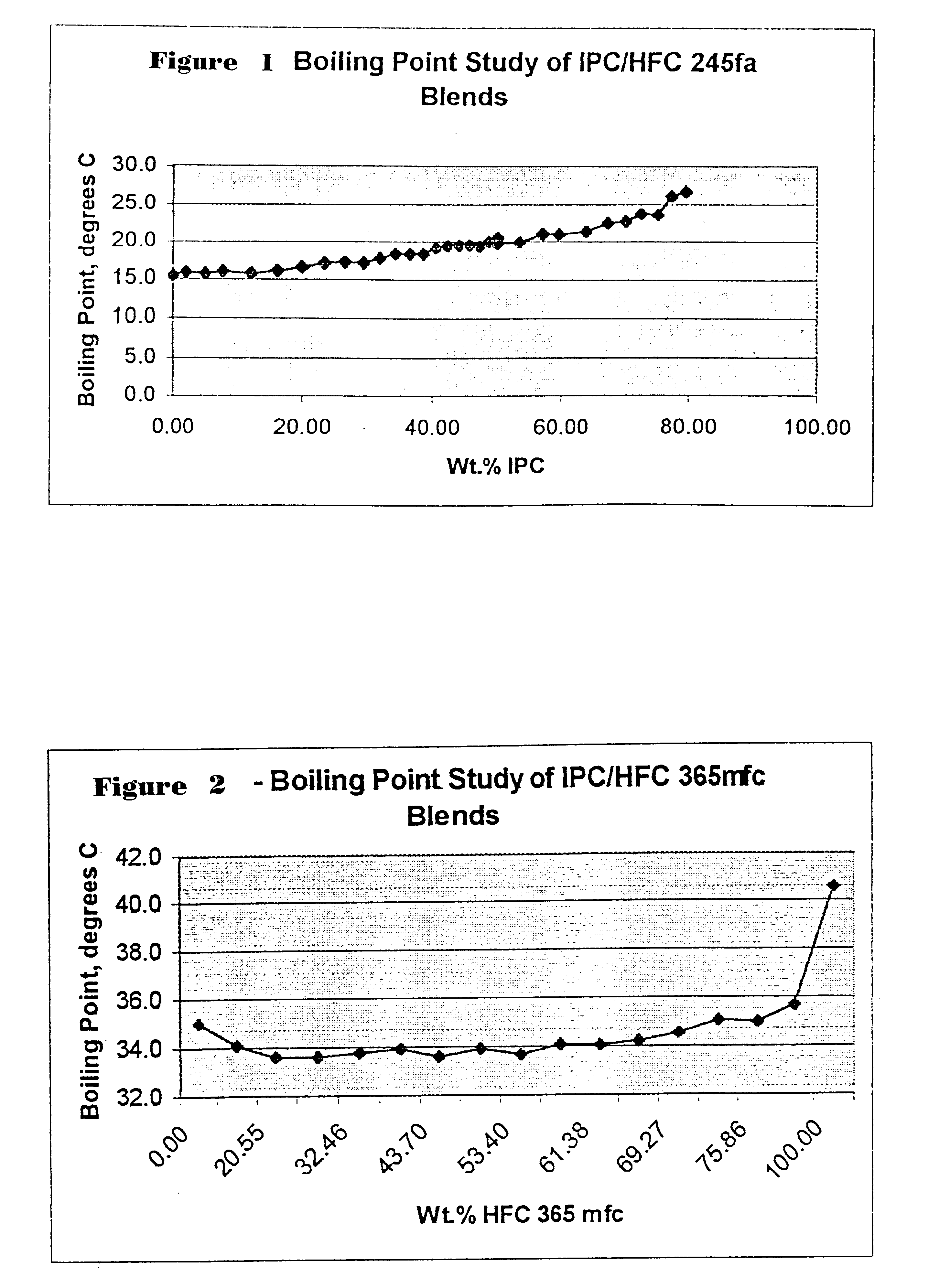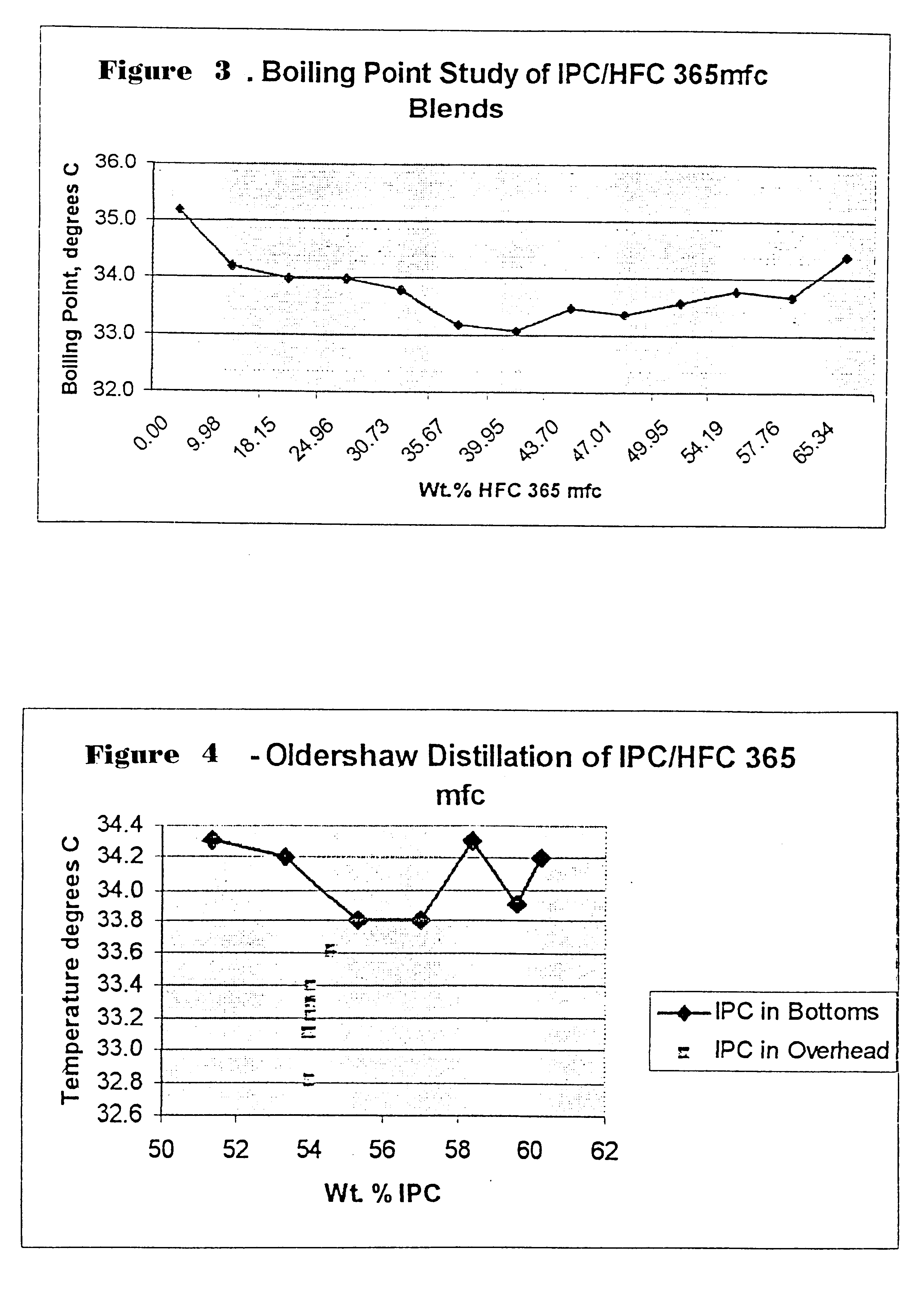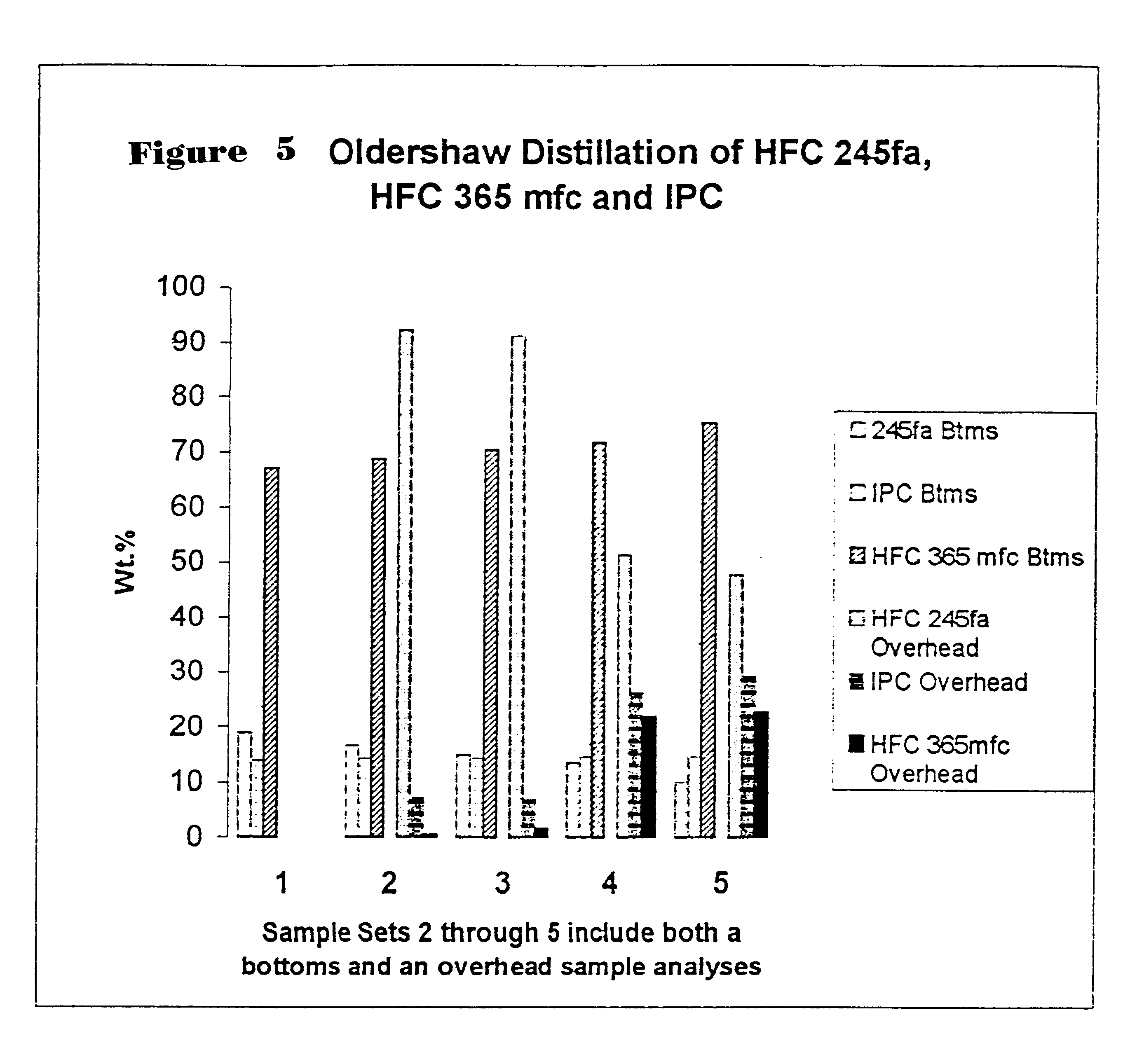Isopropyl chloride with hydrofluorocarbon or hydrofluoroether as foam blowing agents
a technology of hydrofluoroether and isopropyl chloride, which is applied in the direction of detergent compositions, liquid soaps, chemistry apparatus and processes, etc., can solve the problems of not disclosing fluorocarbons, deficient reference in not disclosing azeotropic mixtures with reduced flammability, and environmental problems, so as to reduce or eliminate the combustibility of 2-chloropropane
- Summary
- Abstract
- Description
- Claims
- Application Information
AI Technical Summary
Benefits of technology
Problems solved by technology
Method used
Image
Examples
example 2
The purpose of the testing was to determine the amount of HFC 245 fa required in a blend with isopropyl chloride (IPC) to suppress the IPC flash point under the DOT approved method ASTM D 3828 "Standard Test Methods for Flash Point by SetaFlash Closed Tester". IPC has an extremely low flash point at -32.degree. C. (closed cup). Results were surprising in that a blend with as much as 43.5% IPC showed no flash point as defined by the method.
Details
The following blends were tested with the SetaFlash laboratory unit:
The observations above were consistent with the typical character of chlorinated solvents in flash point testing. Usually, as the flash point temperature is approached, the applied flame becomes green and enlarged. However, this is not a flash point as defined by the ASTM method. In the method, the flame must be pulled down into the cup and sweep across the sample surface for a true flash point.
HFC 245 fa / cyclopentane blends were also tested for comparison to the previously ...
example 3
The purpose of the testing was to determine the amount of HFC 227 ea required in a blend with isopropyl chloride (IPC) to suppress the IPC flash point under the DOT approved method ASTM D 3828 "Standard Test Methods for Flash Point by SetaFlash Closed Tester". IPC has an extremely low flash point at -32.degree. C. (closed cup). Results show that between 90% and 93% IPC concentrations have no flash point as defined by the ASTM method.
Details
Results for flash point testing of HFC 227ea / IPC blends are shown in Table I. Flashback observations where shown are not true flash points as defined by the ASTM method.
The results suggest that an IPC concentration of between 89% and 93% blended with HFC 227ea may be considered non-flammable by the Standard DOT ASTM test.
example 4
This report summarizes the boiling point and azeotrope studies conducted on IPC / HFC blends. The purpose of the studies was to identify azeotropes or azeotropic-like compositions that could prove useful in foam blowing applications. HFC 245 fa and HFC 365 mfc were chosen for the studies because they are considered the most likely commercial high volume options in foam blowing applications.
Azeotropes
Azeotropic mixtures or azeotrope-like mixtures exhibit either a maximum or a minimum boiling point. These mixtures have the same composition both in the liquid and the vapor and they can not be separated into their components by distillation. Therefore, boiling point curves were generated for both IPC / HFC 245 fa and IPC / HFC 365 mfc mixtures. The first boiling point measured was of one pure component and then measurements were taken upon gradual additions of the second component. The azeotropic mixture experiments were carried out at one atmospheric pressure.
1. Boiling point study results s...
PUM
| Property | Measurement | Unit |
|---|---|---|
| pressure | aaaaa | aaaaa |
| flash point | aaaaa | aaaaa |
| boiling point | aaaaa | aaaaa |
Abstract
Description
Claims
Application Information
 Login to View More
Login to View More - R&D
- Intellectual Property
- Life Sciences
- Materials
- Tech Scout
- Unparalleled Data Quality
- Higher Quality Content
- 60% Fewer Hallucinations
Browse by: Latest US Patents, China's latest patents, Technical Efficacy Thesaurus, Application Domain, Technology Topic, Popular Technical Reports.
© 2025 PatSnap. All rights reserved.Legal|Privacy policy|Modern Slavery Act Transparency Statement|Sitemap|About US| Contact US: help@patsnap.com



